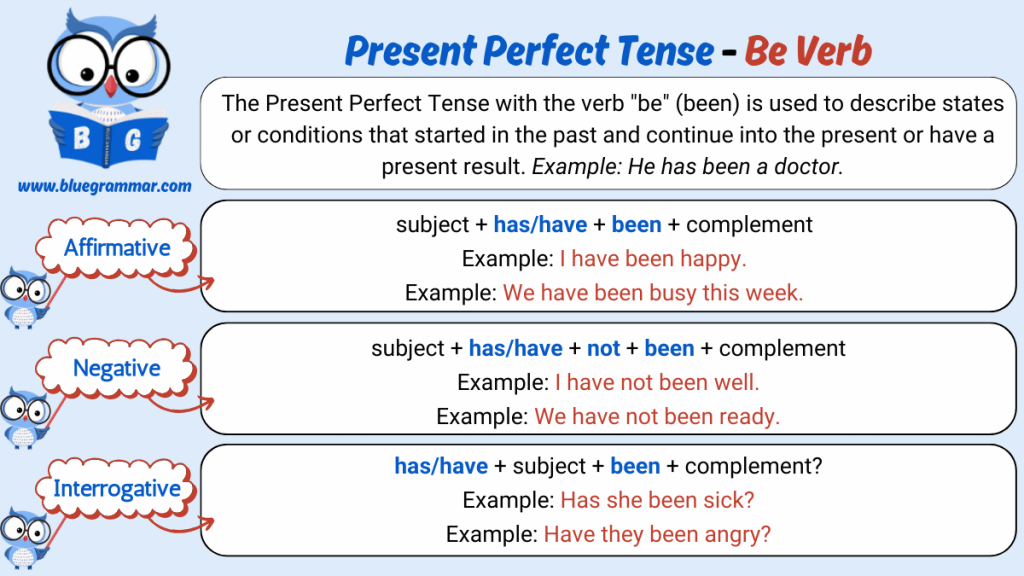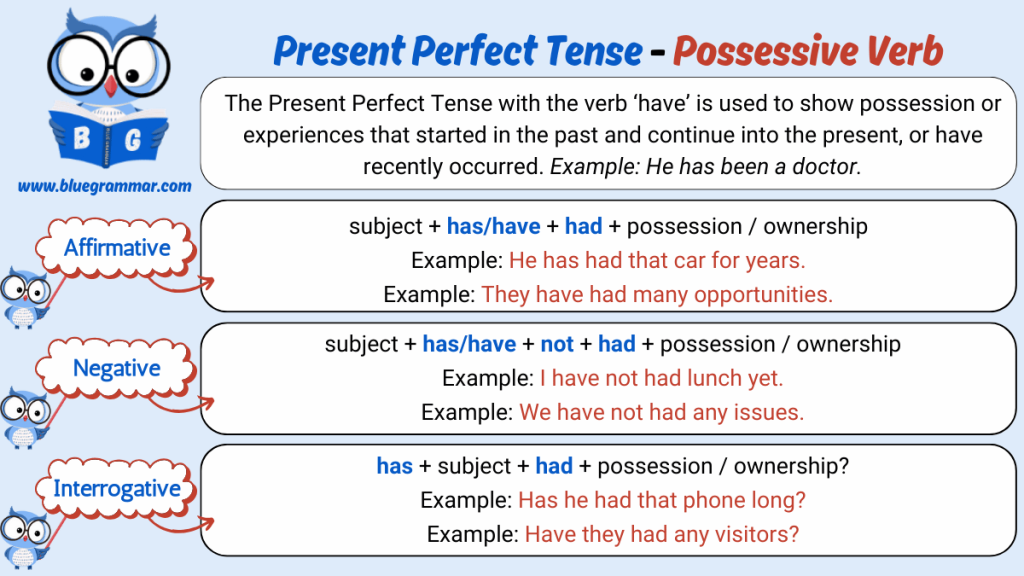
Present Perfect Tense : Action Verb
The Present Perfect Tense is used with action verbs to describe actions that happened at an unspecified time before now, or actions that started in the past and continue up to the present. It is often used to talk about life experiences, recent events, and changes over time. This tense connects the past with the present using has/have and the past participle form of the verb (V3).

Making Positive Sentences
Structure:
Subject + has/have + past participle (V3) + object (if any)
Use has with he, she, it (singular)
Use have with I, you, we, they (plural)
Examples with Object:
She has written a novel.
They have finished their homework.
Examples without Object:
I have eaten.
He has arrived.
Making Negative Sentences
Structure:
Subject + has/have + not + past participle (V3) + object (if any)
Examples with Object:
She has not completed the task.
We have not seen the movie.
Examples without Object:
I have not slept.
He has not left.
Making Interrogative Sentences
Structure:
Has/Have + subject + past participle (V3) + object (if any)?
Examples with Object:
Have you read the book?
Has he taken the medicine?
Examples without Object:
Have they arrived?
Has she slept?
Present Perfect Tense : Be Verb
The “be” verbs (been) in the Present Perfect Tense are commonly used to describe states or locations when talking about life experiences, visits, or roles held in the past but not specifying exactly when. The verb “been” (past participle of “be”) is used after has/have.

Making Positive Sentences
Structure:
Subject + has/have + been + adjective/location/phrase
Examples:
I have been tired lately.
She has been to Paris.
They have been very helpful.
Making Negative Sentence
Structure:
Subject + has/have + not + been + adjective/location/phrase
Examples:
He has not been well.
We have not been to that place.
She has not been honest.
Making Interrogative Sentence
Structure:
Has/Have + subject + been + adjective/location/phrase?
Examples:
Have you been busy?
Has he been to the dentist?
Have they been helpful?
Present Perfect Tense : Possessive Verb
In the Present Perfect Tense, “have” as a main verb shows possession or experience when paired with has/have as auxiliaries. However, it is more commonly used to express experiences or completed actions rather than permanent possession.

Making Positive Sentences
Structure:
Subject + has/have + had + object/experience
Here, the first “have” is the auxiliary verb and the second “had” is the past participle of “have.”
Examples with Object:
I have had many opportunities.
She has had three jobs so far.
Examples without Object:
We have had enough.
He has had better days.
Making Negative Sentences
Structure:
Subject + has/have + not + had + object/experience
Examples with Object:
They have not had any training.
She has not had a chance to speak.
Examples without Object:
I have not had enough.
He has not had much luck.
Making Interrogative Sentences
Structure:
Have/Has + subject + had + object/experience?
Examples with Object:
Have you had breakfast?
Has she had any problems?
Examples without Object:
Have they had enough?
Has he had a good time?
Important Note:
The Present Perfect Tense does not mention the exact time of action. Use Simple Past if the exact time is specified.
Correct (Present Perfect):
I have visited London.
Incorrect (with time mentioned):
I have visited London last year.
Correct (Simple Past):
I visited London last year.